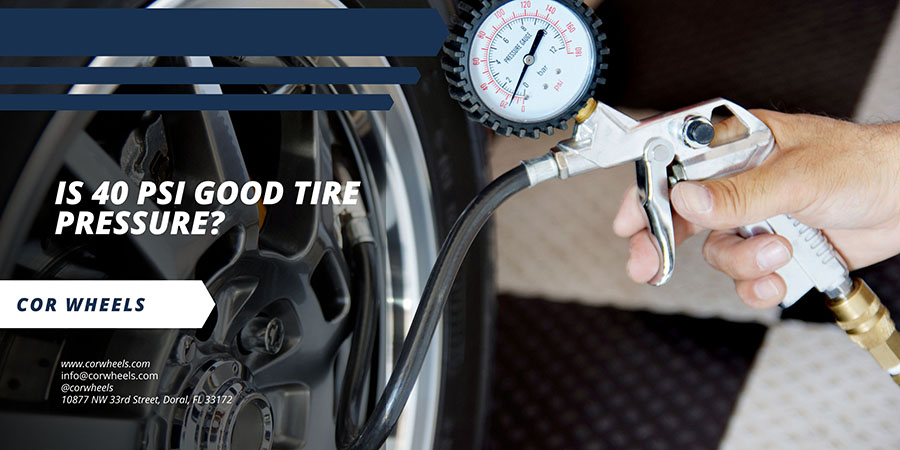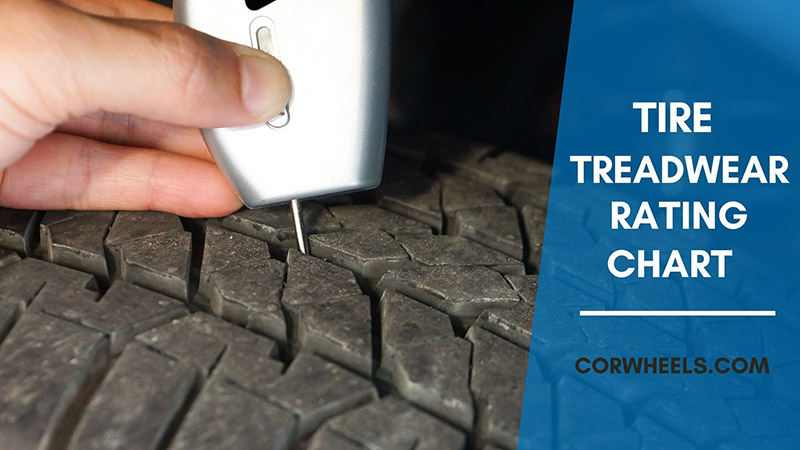The load index for tires is part and parcel in ensuring safe driving and optimal performance of your vehicle. We’re always advised to choose a tire with the correct load index to avoid tire failure and accidents.
The tire load index chart provides valuable information on load capacity and can help you select the right tire for your vehicle. Let’s dive deeper and learn more details.
In this article:
What Is Load Rating On Tires And Where To Find It?
The tire load index is a rating system that indicates the maximum weight a tire can carry safely. It’s an essential factor to consider when buying new tires for your vehicle because exceeding the maximum weight limit can lead to tire failure and even accidents.

The load index is usually represented by a number series, with each number corresponding to a specific weight capacity in pounds. The higher the load index number, the more weight the tire can carry.
You can find the load index of your tires by looking at the sidewall, where it’s usually listed along with the tire’s size, speed rating, and other essential information.
Is The Tire Load Index Important?
Yes. The tire load index is a must to consider when buying new tires or replacing old ones. Exceeding tires’ weight limit can lead to tire failure and accidents.
Once when my family moved to a new apartment, I tried to squeeze as much stuff as possible into my Standard Ford F150, while the load index rating was only 77, meaning that all four tires could handle more than 3,600 pounds.
The thing is: I forgot to count the driver (me) and the passengers’ weight (my family). Soon after I hit the road, I could sense the tires wobbling clearly and not following my steering wheel’s direction. Then, I knew I had to take 2 trips to transport all my stuff.
Choosing a tire with a load index lower than your vehicle’s weight can result in increased wear and tear, reduced fuel efficiency, and a shorter lifespan for the tire.
On the other hand, selecting a tire with a higher load index than necessary can lead to overpaying and a rougher ride. It’s important to consult your vehicle owner’s manual or a tire expert to determine the appropriate load index for your vehicle.
Tire Load Rating Chart
Although some are higher, the majority of passenger-car tire load indices fall between 75 and 100. The conversion of load indices to weight is depicted in the table. You can multiply the number by 4 (4 tires) to calculate your car’s payload capacity.
| Load Index | Load (lbs) | Load Index | Load (lbs) |
|---|---|---|---|
| 0 | 99 | 76 | 882 |
| 1 | 102 | 77 | 908 |
| 2 | 105 | 78 | 937 |
| 3 | 107 | 79 | 963 |
| 4 | 110 | 80 | 992 |
| 5 | 114 | 81 | 1019 |
| 6 | 117 | 82 | 1047 |
| 7 | 120 | 83 | 1074 |
| 8 | 123 | 84 | 1102 |
| 9 | 128 | 85 | 1135 |
| 10 | 132 | 86 | 1168 |
| 11 | 136 | 87 | 1201 |
| 12 | 139 | 88 | 1235 |
| 13 | 143 | 89 | 1279 |
| 14 | 148 | 90 | 1323 |
| 15 | 152 | 91 | 1356 |
| 16 | 157 | 92 | 1389 |
| 17 | 161 | 93 | 1433 |
| 18 | 165 | 94 | 1477 |
| 19 | 171 | 95 | 1521 |
| 20 | 176 | 96 | 1565 |
| 21 | 182 | 97 | 1609 |
| 22 | 187 | 98 | 1653 |
| 23 | 193 | 99 | 1709 |
| 24 | 198 | 100 | 1764 |
| 25 | 204 | 101 | 1819 |
| 26 | 209 | 102 | 1874 |
| 27 | 215 | 103 | 1929 |
| 28 | 220 | 104 | 1984 |
| 29 | 227 | 105 | 2039 |
| 30 | 234 | 106 | 2094 |
| 31 | 240 | 107 | 2149 |
| 32 | 247 | 108 | 2205 |
| 33 | 254 | 109 | 2271 |
| 34 | 260 | 110 | 2337 |
| 35 | 267 | 111 | 2403 |
| 36 | 276 | 112 | 2469 |
| 37 | 282 | 113 | 2535 |
| 38 | 291 | 114 | 2601 |
| 39 | 300 | 115 | 2679 |
| 40 | 309 | 116 | 2756 |
| 41 | 320 | 117 | 2833 |
| 42 | 331 | 118 | 2910 |
| 43 | 342 | 119 | 2998 |
| 44 | 353 | 120 | 3086 |
| 45 | 364 | 121 | 3197 |
| 46 | 375 | 122 | 3307 |
| 47 | 386 | 123 | 3417 |
| 48 | 397 | 124 | 3527 |
| 49 | 408 | 125 | 3638 |
| 50 | 419 | 126 | 3748 |
| 51 | 430 | 127 | 3858 |
| 52 | 441 | 128 | 3968 |
| 53 | 454 | 129 | 4079 |
| 54 | 467 | 130 | 4189 |
| 55 | 481 | 131 | 4289 |
| 56 | 494 | 132 | 4409 |
| 57 | 507 | 133 | 4541 |
| 58 | 520 | 134 | 4674 |
| 59 | 536 | 135 | 4806 |
| 60 | 551 | 136 | 4938 |
| 61 | 567 | 137 | 5071 |
| 62 | 584 | 138 | 5203 |
| 63 | 600 | 139 | 5357 |
| 64 | 617 | 140 | 5512 |
| 65 | 639 | 141 | 5677 |
| 66 | 639 | 142 | 5842 |
| 67 | 677 | 143 | 6008 |
| 68 | 694 | 144 | 6173 |
| 69 | 716 | 145 | 6393 |
| 70 | 739 | 146 | 6614 |
| 71 | 761 | 147 | 6779 |
| 72 | 783 | 148 | 6844 |
| 73 | 805 | 149 | 7165 |
| 74 | 827 | 150 | 7385 |
| 75 | 852 |
What Do SL And XL Mean On Tires?
If you’ve ever shopped for tires, you may have noticed the letters “SL” or “XL” on the tire sidewall. These letters indicate the tire’s load range and capacity, just like the load index rating.

What does SL mean on tires? It stands for “standard load,” indicating that the tire can carry up to its maximum load capacity at a specified tire maximum air pressure.
XL, on the other hand, denotes “extra load” or “reinforced,” which means that the tire can carry a higher weight at the same pressure as a standard tire. XL tires are typically designed for vehicles with greater performance or load bearing capabilities.
Frequently Asked Questions
Is A Higher Load Index Better?
Yes. A higher load index shows that a tire can carry excess weight safely. Therefore, a greater load index would be better if a tire is required for this specification. However, when a tire with a proper load index is used unnecessarily, it can result in reduced ride comfort and higher cost.
How Do You Calculate Tire Load Index?
The tire load index is a standardized rating system established by tire manufacturers. It’s not calculated but determined through testing and assigning a specific load index number based on the tire’s maximum load carrying capacity.
What Is The Difference Between 94 And 98 Load Indexes?
The difference between the two is the weight-carrying capacity of the tire. The maximum weight limitation the former can support is 1477 pounds, whereas the number of the latter is 1653 pounds. This means that a tire with a load index of 98 can support more weight than one with a load index of 94.
What Is The Highest Load Rating Tire?
The highest load rating for a tire is 110. Tires with a load index of 110 can transport a maximum weight of 5512 pounds. These tires are typically meant for heavy-duty vehicles such as commercial trucks, buses, and trailers that require high weight-carrying capacity.
The Bottom Line
The trailer tire load range chart is a handy reference for selecting the right tire for your vehicle. It provides valuable information on load capacity and helps ensure optimal performance and safe driving. And don’t ever think of exceeding that weight limit.








